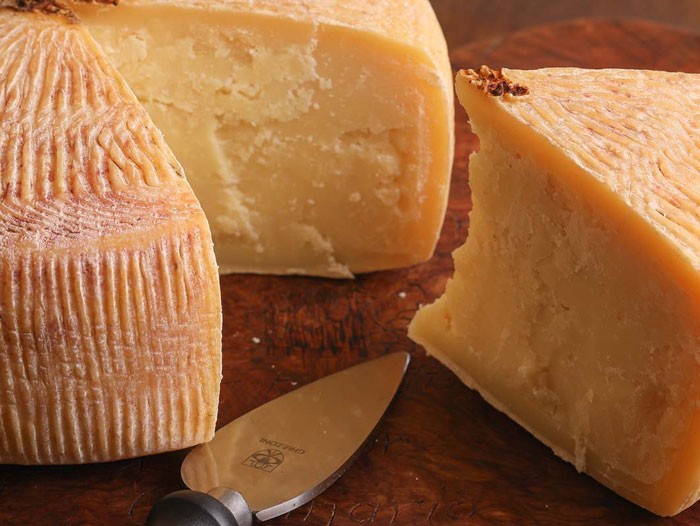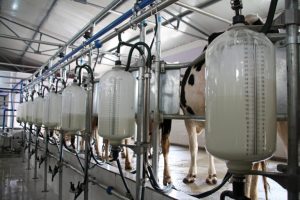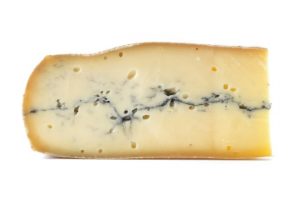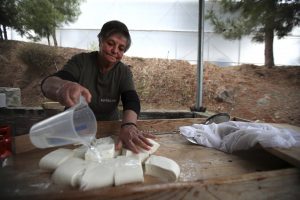
There are many reasons why hard cheeses can sometimes show defects. With this article, we would like to address the main types of defects and their possible causes.
Once their presence has been verified, there are no strategies to eliminate defects. For this reason, prevention is the only effective action to tackle the development of defects.
There is a link between raw milk and the finished product: the quality of the former greatly influences the quality of the latter. Therefore, optimal farm management will allow us to obtain high-quality raw milk, which allows us to eliminate a whole series of risks from the beginning (e.g., the presence of clostridia responsible for some internal structural defects, late blowing).
Thus, the origin of cheese defects can be detected both in primary production and at the processing plant.
In hard and cooked cheeses such as Grana Padano and Parmigiano Reggiano PDO, we can detect:
- surface defects (visible on sides and flat areas), detectable visually;
- texture defects, detectable visually by cutting the cheese wheel, by beating the wheels and/or by X-ray analysis;
- sensory defects (aroma and flavor), detectable through sensory analysis.
These defects can be localized (on the side, on the flat area, in the heart of the wheel) or widespread (when they affect an extensive area of the wheel).
The causes can be found in different aspects of the production process, such as: low milk quality, technological mistakes during processing, or unsuitable environmental conditions during ripening.
Surface defects
There are many causes that can lead to surface defects, such as technological errors during processing (unbalanced ingredient dosage, unsuitable wheel turning procedure) or during ripening, a delicate and very long phase that, in some cases, exceeds 36 months.
Among the defects due to processing errors, there is the formation of white spots in the curd in baskets. Spots are wetter (due to retained whey) and softer portions of the paste, distinguishable from the rest of the wheel, which is dry. These spots are formed as a result of the different sedimentation speed of the curd granules (the heavier ones descend faster towards the bottom, while the smaller ones settle on the upper surface, thus generating spots).
In turn, the retention of the whey (rich in flora) can cause excessive acidification which leads to white color due to increased demineralization. Steaming the cheese will allow the wheel to dry, reducing the future risk of rotting.
During seasoning, there are three fundamental pillars to be balanced and constantly monitored: relative humidity (RH, optimum at 80-90%), temperature (optimum at 15-22 °C) and ventilation.
Low humidity values can lead to: rind thickening, mechanical detachments under the rind, dehydration of the cheese and consequent weight loss. High humidity leads to softening of the surface, optimal conditions for infestation by any parasites present, worsening of surface defects. Drastic drops in humidity (<70% RH) can also lead to internal structural tensions leading to internal cracks.
Low temperatures could lead to a slowing down of ripening and low environmental humidity, with the consequences discussed above. High temperatures result not only in fat exudation, but also in the activation of abnormal fermentations.
As for ventilation, when it is low, thermal stratification can be generated in the ripening rooms, with higher temperature areas towards the top. High ventilation affects the environmental humidity, which is reduced, leading to a thickening of the crust of the forms.
Texture defects
The origin of texture defects can depend on: mechanical factors, that is associated with internal tensions in the wheels or abrasions; fermentative processes occurring inside the wheels; environmental factors, related to the management of ripening.
What are the effects?
In the case of mechanical tensions, we could detect cracks inside the wheel, detachment immediately under the rind, external cracks. In case of internal fermentation, there could be holes, cracks, anomalous colors, localized or widespread defects. In case of bad environmental management, the risk corresponds to rotting, presence of molds, cracks, abnormal colors, nails, increased risk of pest infestations.
Defects due to fermentative processes deserve a focus. In hard cheeses, aerobic microorganisms rarely create problems: what is most feared is that flora capable of proliferating in anaerobic conditions.
The main microorganisms responsible for abnormal fermentations are butyric acid producing clostridia, heterofermentative lactic acid bacteria, propionic acid bacteria and coliforms. These microorganisms have a different ability to produce carbon dioxide, responsible for the formation of holes, cracks and abnormal colors mentioned above.
Fermentation can occur a few days after cheese-making, causing early blowing, or during ripening (late blowing defect). This occurs due to conditions favorable to the development of gas-forming microorganisms, such as inadequate acidification of the curd in the first hours after cheese-making, excessive humidity of the curd, the presence of inhibitory substances for the lactic flora in the milk.
Clostridia can ferment lactose, lactic acid, calcium lactate. A peculiar aspect is their great ability to form spores of various types capable of surviving in adverse conditions (such as high temperatures, presence of antimicrobial substances, radiation, drying conditions). Their origin is essentially linked to feed management, in particular silage. In cheeses, they can cause both limited and more explosive defects, accompanied by intense proteolysis and garlic odor (typical of Cl. Sporogenes, which can be controlled with proper curd acidification). Cl. tyrobutyricum is particularly linked to corn silage, admitted by the specification for Grana Padano PDO: lysozyme is used to control its development in wheels.
Sensory defects
Also in this case, the causes can be multiple. Among the sensory defects of hard cheeses, spicy can occur due to heterolactic fermentation processes or the presence of fecal coliforms. Even rennets with a high concentration of pepsin can lead to this defect.
An acidic taste can accumulate as a result of excessive lactic fermentation, also linked to excess whey and poor curd draining.
When bitter peptides accumulate deriving from lipolytic enzymatic reactions, excessive ripening, unsuitable curds, the bitter defect can be perceived. An excessive salty taste results from a prolonged stay in the brines.
References
Germano Mucchetti, Erasmo Neviani, 2006. Microbiologia e tecnologia lattiero-casearia. Qualità e sicurezza. Tecniche nuove
INNOVAMILK – Prevenzione e diagnosi dei difetti nei formaggi a pasta dura
Marco Loguercio
Senior Technical Consultant
Alpha Solutions, Food and Ingredients
mlo@alpha-solution.it
























